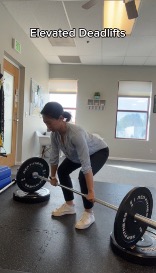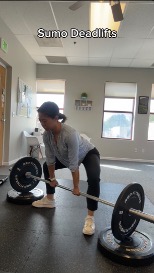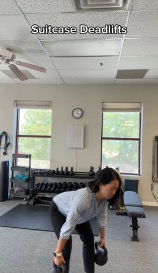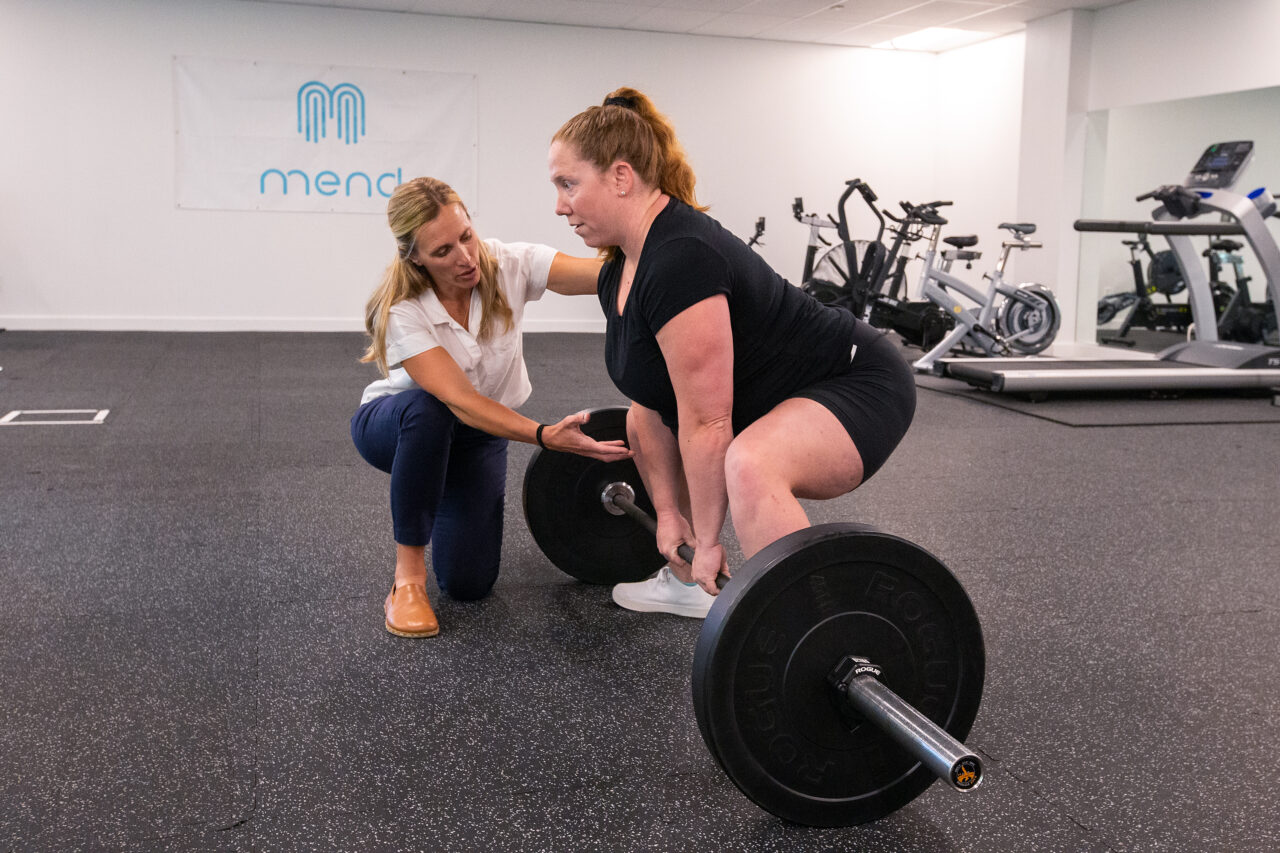Pregnancy is a powerful journey, one that transforms your body, your strength, and your mind. As a physical therapist and strength coach, I firmly believe that staying active and lifting during pregnancy (when medically cleared) isn’t just okay it’s empowering and necessary.
In this post, I’ll walk you through three deadlift modifications I demonstrated in my recent video: the elevated deadlift, the sumo-stance deadlift, and the dual kettlebell deadlift. Each variation is designed to support your changing body, preserve your strength, and keep you feeling confident in your lifting practice.
Why Modify Your Deadlift During Pregnancy?
Your body is undergoing major changes: ligamentous laxity increases, your center of gravity shifts, your belly grows and your core engagement patterns evolve. These changes mean you’ll want to adjust your lifting strategies to maintain safety and performance.
Here are a few key physiologic considerations:
- With increased abdominal volume, the risk of excessive intra-abdominal pressure goes up … modifications help decrease spinal injuries.
- Hormonal shifts (e.g., increased relaxin) can influence joint stability and connective tissue stiffness … modifications and form focus help you stay aligned and strong.
- Your hip and pelvic mechanics shift to accommodate your growing baby … choosing stances that allow for space and stability becomes important.
Ultimately, your focus shifts … your goal becomes maintaining strength, preserving muscle, and building confidence, rather than chasing new personal records. And if you happen to hit a PR along the way, consider it an extra bonus!

- Elevated Deadlift
In the elevated deadlift, you perform the lift from blocks, plates, or another raised surface so your starting position is higher than usual. This reduces the range of motion, which helps:
- Minimize excessive stretch or strain in your posterior chain when your core is changing
- Limit unnecessary hip flexion or trunk flexion that may feel unsafe or uncomfortable
- Keep the lift controlled, without sacrificing the grip or hip-hinge mechanics
How to perform it (with cues):
- Set up stands, plates or blocks so your bar or kettlebell is elevated to just below knee height (or whatever feels appropriate).
- Set your feet under the bar, hip-width or slightly wider, toes pointing forward or slightly outward.
- Hinge your hips back, brace your core (as appropriate for pregnancy), maintain a neutral spine, and pull the weight upward by extending your hips and knees.
- Lower the weight under control hinging the hips first, then bending knees as needed, keeping your back safe.
- Focus on a slow descent and a powerful, controlled ascent.
Why this helps during pregnancy:
By reducing the range of motion, you’re limiting the demand on a changing core and pelvic floor which may be experiencing more strain. You’re still engaging your glutes, hamstrings, back, grip strength, and maintaining the deadlift pattern.

- Sumo-Stance Deadlift
The sumo stance deadlift widens your feet significantly and turns your toes out slightly creating more space between your legs and allowing your hips to take a more vertical axis. This is beneficial during pregnancy for several reasons:
- The wider stance often accommodates a growing belly more comfortably.
- You can maintain an upright torso more easily, reducing shear forces and lumbar stress.
- The hip and adductor demand shifts slightly, which can feel more natural if your core and pelvis are adjusting.
How to perform it (with cues):
- Place your feet much wider than hip-width (for many, 1.5–2x hip width), toes slightly outward.
- Grip the bar or kettlebells inside your knees.
- Hinge your hips back, maintain a strong brace, keep your spine neutral.
- Drive through your heels and mid-foot, extend hips and knees together to lift.
- Lower with the same control, maintaining your brace and hinge pattern.
Why this variation is pregnancy-friendly:
The sumo stance shifts more of the load into the hips and adductors, and less into excessive lumbar flexion or trunk lean. This can create a more comfortable and safe movement pattern when your belly is growing and your body mechanics are already adapting.

- Dual Kettlebell/Dumbbell Deadlift
Using two kettlebells or dumbbells (one in each hand) offers unique benefits: balance, symmetry, and a lower profile lift (no bar across your legs or body). Here’s why it works:
- The lower profile means less risk of contacting your belly with a bar, or needing to clear large equipment.
- Kettlebells/Dumbbells require more stability and coordination helping maintain accessory strength and core engagement.
- The dual load maintains bilateral strength without overemphasizing maximal load.
How to perform it (with cues):
- Grab the two kettlebells/dumbbells by your side and set your feet under them or slightly behind for balance.
- Lower by hinging hips back, then bending knees as needed, under control.
- Drive your feet into the ground, extend your hips and knees, stand up tall.
Why this is a great modification during pregnancy:
It allows you to keep the hip-hinge pattern active, maintain lower-body strength, and avoid heavy loading or bar mechanics that might feel awkward or unsafe as your body changes.
Safety Tips & Considerations
When lifting during pregnancy, always keep these guidelines in mind:
- Get medical clearance from your physical therapist, obstetric provider, and/or maternal health professional before continuing or beginning strength training.
- Stay attentive to how your body feels. If anything hurts, changes suddenly, or you feel unstable, stop and reassess.
- Focus on form over load: the goal is maintenance and movement quality, not heavy weights.
- Prioritize core and pelvic floor support, especially as intra-abdominal pressure changes.
- Stay hydrated, monitor exertion (RPE or “can you talk comfortably?”), and avoid excessive fatigue.
- Modify or stop exercises if you experience dizziness, breathlessness, pain, bleeding, or other red-flags.
Wrapping Up & Take Action
Pregnancy doesn’t mean you stop lifting it means you adapt. Respect the changes in your body, listen to how you feel, and stay committed to strength, stability, and safe movement. The elevated deadlift, sumo-stance deadlift, and dual kettlebell/dumbbell deadlift are three effective ways to maintain your practice with care and intention.
If you want personalized guidance, including trimester-specific protocols, accessory lifts, and cues for breathing and bracing while lifting, schedule an appointment with a pelvic health specialist. A specialist can help you continue lifting safely, protect your pelvic floor, and support your strength goals throughout pregnancy.
Stay strong, stay mindful, and keep moving!
Click Here to schedule your next appointment with the experts at MEND

